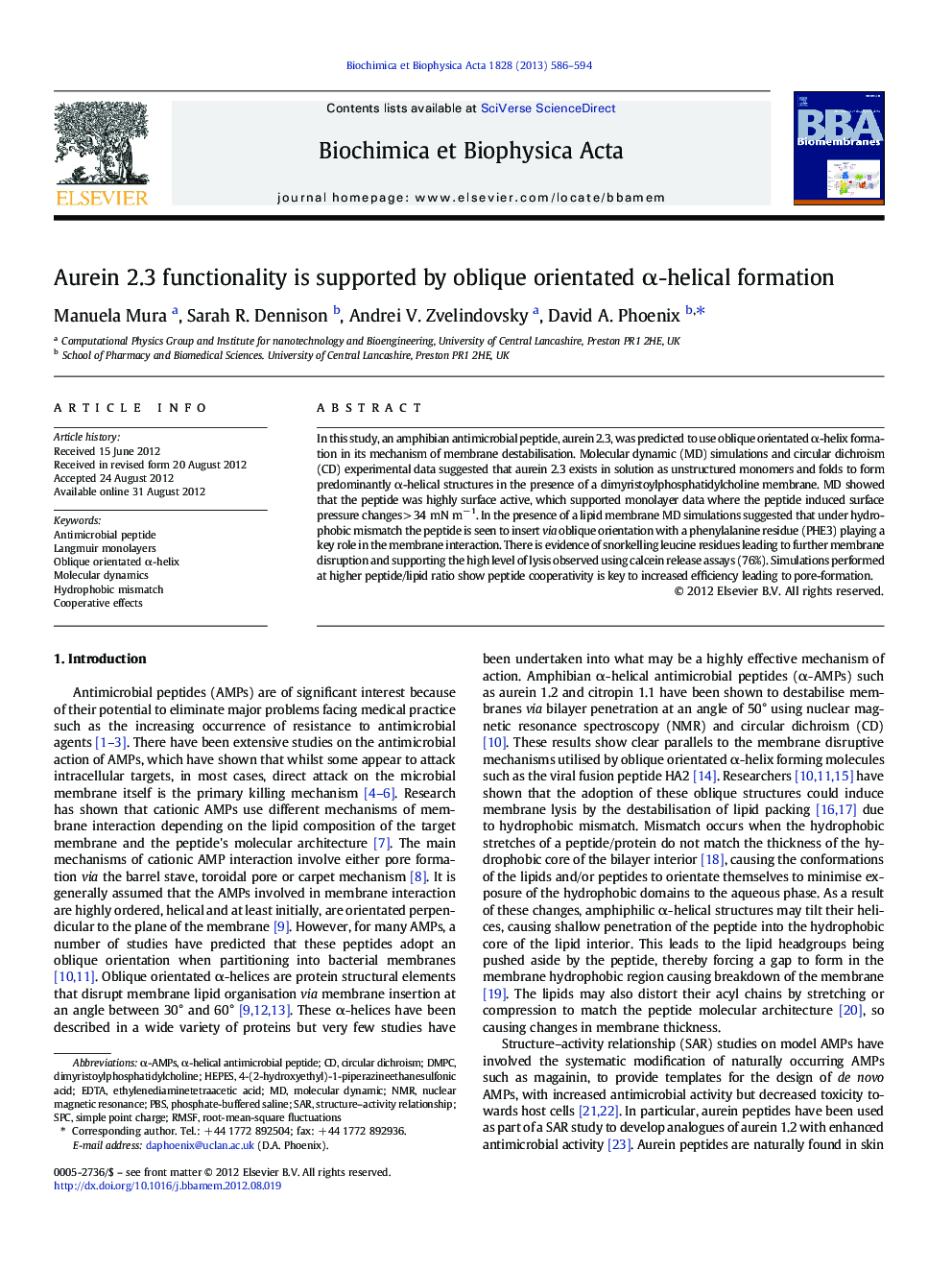| Article ID | Journal | Published Year | Pages | File Type |
|---|---|---|---|---|
| 1944396 | Biochimica et Biophysica Acta (BBA) - Biomembranes | 2013 | 9 Pages |
In this study, an amphibian antimicrobial peptide, aurein 2.3, was predicted to use oblique orientated α-helix formation in its mechanism of membrane destabilisation. Molecular dynamic (MD) simulations and circular dichroism (CD) experimental data suggested that aurein 2.3 exists in solution as unstructured monomers and folds to form predominantly α-helical structures in the presence of a dimyristoylphosphatidylcholine membrane. MD showed that the peptide was highly surface active, which supported monolayer data where the peptide induced surface pressure changes > 34 mN m− 1. In the presence of a lipid membrane MD simulations suggested that under hydrophobic mismatch the peptide is seen to insert via oblique orientation with a phenylalanine residue (PHE3) playing a key role in the membrane interaction. There is evidence of snorkelling leucine residues leading to further membrane disruption and supporting the high level of lysis observed using calcein release assays (76%). Simulations performed at higher peptide/lipid ratio show peptide cooperativity is key to increased efficiency leading to pore-formation.
Graphical abstractFigure optionsDownload full-size imageDownload high-quality image (149 K)Download as PowerPoint slideHighlights► MD simulations were used to study interaction of aurein 2.3 and DMPC lipid bilayer. ► Under hydrophobic mismatch aurein 2.3 inserts via oblique orientation. ► Phenylalanine residue plays a key role in the membrane interaction of aurein 2.3.
